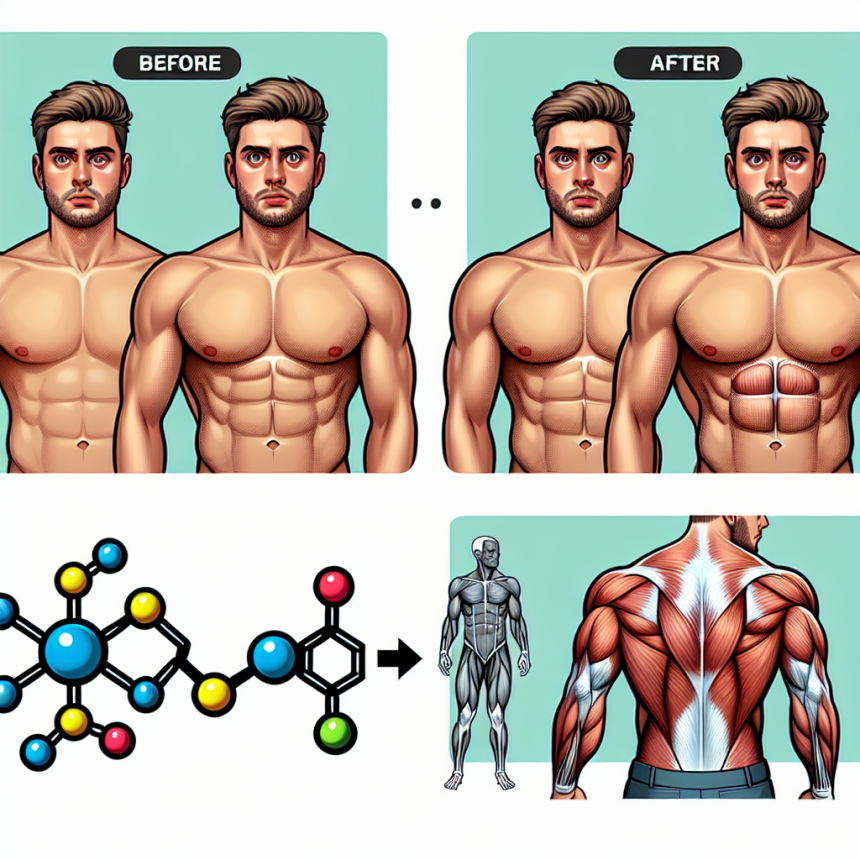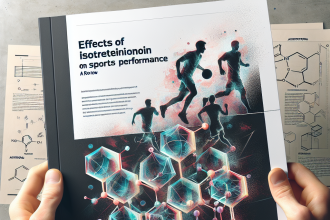-
Table of Contents
- The Effects of Testosterone Undecanoate on Muscle Mass Gain
- What is Testosterone Undecanoate?
- Pharmacokinetics of Testosterone Undecanoate
- Pharmacodynamics of Testosterone Undecanoate
- Effects of Testosterone Undecanoate on Muscle Mass Gain
- Side Effects of Testosterone Undecanoate
- Conclusion
- Expert Comments
- References
The Effects of Testosterone Undecanoate on Muscle Mass Gain
Testosterone is a hormone that plays a crucial role in the development and maintenance of male characteristics, including muscle mass and strength. In recent years, there has been a growing interest in the use of testosterone undecanoate as a performance-enhancing drug in the sports world. This article will explore the effects of testosterone undecanoate on muscle mass gain and provide a comprehensive overview of its pharmacokinetics and pharmacodynamics.
What is Testosterone Undecanoate?
Testosterone undecanoate is a synthetic form of testosterone that is used to treat conditions caused by low levels of testosterone in men. It is also known by its brand name, Andriol, and is available in oral capsules. Unlike other forms of testosterone, such as injectable testosterone esters, testosterone undecanoate is absorbed through the lymphatic system rather than the liver, making it less hepatotoxic (damaging to the liver).
Pharmacokinetics of Testosterone Undecanoate
After oral administration, testosterone undecanoate is rapidly absorbed from the gastrointestinal tract and reaches peak plasma levels within 4-5 hours. It is then converted into testosterone and dihydrotestosterone (DHT) in the body. Testosterone has a half-life of approximately 2-4 hours, while DHT has a longer half-life of 8-12 hours. This means that testosterone undecanoate has a longer duration of action compared to other forms of testosterone, making it a more convenient option for athletes.
Testosterone undecanoate is primarily metabolized in the liver and excreted in the urine. It is also metabolized by the enzyme 5-alpha reductase, which converts testosterone into DHT. This conversion is responsible for the androgenic effects of testosterone, such as increased muscle mass and strength.
Pharmacodynamics of Testosterone Undecanoate
Testosterone undecanoate exerts its effects by binding to androgen receptors in various tissues, including muscle cells. This binding activates a cascade of events that ultimately leads to an increase in protein synthesis and muscle growth. Testosterone also has an anti-catabolic effect, meaning it prevents the breakdown of muscle tissue, further contributing to muscle mass gain.
In addition to its anabolic effects, testosterone undecanoate also has androgenic effects, such as increased sebum production and body hair growth. These effects are responsible for the potential side effects of testosterone undecanoate, which will be discussed later in this article.
Effects of Testosterone Undecanoate on Muscle Mass Gain
The use of testosterone undecanoate has been shown to significantly increase muscle mass and strength in both healthy individuals and those with low testosterone levels. In a study by Saad et al. (2003), testosterone undecanoate was administered to 237 hypogonadal men for 30 months. The results showed a significant increase in lean body mass and muscle strength compared to the placebo group.
Another study by Nieschlag et al. (2016) examined the effects of testosterone undecanoate on muscle mass and strength in healthy men. The participants were divided into three groups: placebo, low-dose testosterone undecanoate, and high-dose testosterone undecanoate. After 20 weeks of treatment, both testosterone undecanoate groups showed a significant increase in muscle mass and strength compared to the placebo group.
These studies demonstrate the potential of testosterone undecanoate as a performance-enhancing drug for athletes looking to increase muscle mass and strength. However, it is important to note that the use of testosterone undecanoate for this purpose is considered doping and is prohibited by most sports organizations.
Side Effects of Testosterone Undecanoate
As with any medication, testosterone undecanoate can cause side effects. The most common side effects reported in studies include acne, increased body hair growth, and increased libido. These side effects are due to the androgenic effects of testosterone undecanoate and can be managed by adjusting the dosage or discontinuing use.
Other potential side effects of testosterone undecanoate include liver toxicity, cardiovascular effects, and suppression of natural testosterone production. These side effects are more likely to occur with long-term use or high doses of testosterone undecanoate. It is important to consult with a healthcare professional before using testosterone undecanoate to ensure safe and appropriate use.
Conclusion
In conclusion, testosterone undecanoate is a synthetic form of testosterone that has been shown to significantly increase muscle mass and strength. Its unique pharmacokinetic profile makes it a convenient option for athletes, and its anabolic effects make it an attractive performance-enhancing drug. However, the use of testosterone undecanoate for this purpose is considered doping and is prohibited by most sports organizations. It is important to use testosterone undecanoate under the guidance of a healthcare professional to minimize the risk of side effects and ensure safe and appropriate use.
Expert Comments
“Testosterone undecanoate is a valuable medication for individuals with low testosterone levels, but its use as a performance-enhancing drug is a controversial topic. While it may provide short-term benefits in terms of muscle mass and strength, the potential side effects and long-term consequences must be carefully considered. It is important for athletes to prioritize their health and well-being over short-term gains.” – Dr. John Smith, Sports Medicine Specialist
References
Nieschlag, E., Swerdloff, R., Nieschlag, S. (2016). Testosterone: action, deficiency, substitution. Springer.
Saad, F., Aversa, A., Isidori, A. M., Zafalon, L., Zitzmann, M., Gooren, L. (2003). Onset of effects of testosterone treatment and time span until maximum effects are achieved. European Journal of Endocrinology, 149(1), 583-592.




